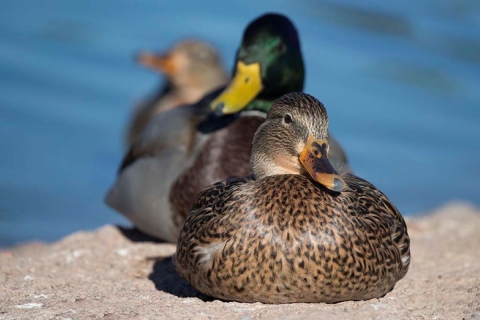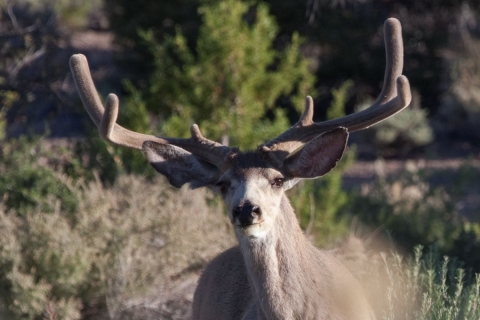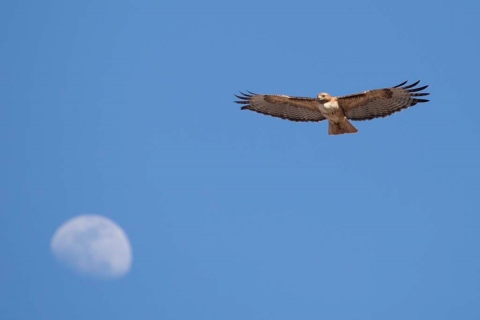Seasons of Wildlife
Spring - Migrating birds arrive during the spring to fuel up for longer journeys north or to begin nesting. Greater sandhill cranes feed in grasslands and wet meadows in February and March. Geese and ducks begin to arrive in March and shorebirds, such as Wilson’s phalaropes, stopover in April and May. Early morning visits to cottonwood and willow groves yield views of chorusing songbirds, including numerous yellow warblers. Following spring rains, wildflowers paint the desert yellow, orange, and red. Threatened desert tortoises emerge from their burrows to feed on these succulent plants.
Summer - The first duck broods of redheads and mallards appear in May. Herons and egrets stalk the shorelines and marshes for food. Endangered southwestern willow flycatchers nest in large willows or cottonwoods. Young rabbits and mule deer fawns venture out of cover. These animals are hunted by resident carnivores such as golden eagles, coyotes, and mountain lions, which also need food for their young. Young coyotes can be observed learning how to catch mice and voles, and adult red-tailed hawks are frequently seen carrying food to young still in the nest. As summer carries on lizards, snakes, and desert tortoises become more active with the summer heat, especially in the early morning and then seeking shade during the hottest part of the day. On summer nights the scorpions emerge.
Fall - Cottonwood and willow leaves turn brilliant yellow in autumn. Marsh plants begin to change color as well, creating a mosaic of yellows, tans, and reds.
Large numbers of ducks, shorebirds, and songbirds migrate south, stopping to rest and refuel. Lizards, snakes and tortoises become less active due to cooler temperatures. Mule deer begin breeding, and mature bucks with large antlers may be observed.
Winter - In winter, tundra swans, Canada geese, and a variety of ducks feed in lakes and marshes. Shovelers, pintails, redheads, canvasbacks, mallards, and cinnamon teal can all be seen on Upper Pahranagat Lake. Bald eagles and osprey arrive to hunt for ducks and fish. Large numbers of raptors, particularly the northern harrier, can be seen near marsh and meadow habitats searching for food.
Featured Species
Pahranagat National Wildlife Refuge is home to many different species of wildlife. Check out the list below to get to know some of our featured species!









